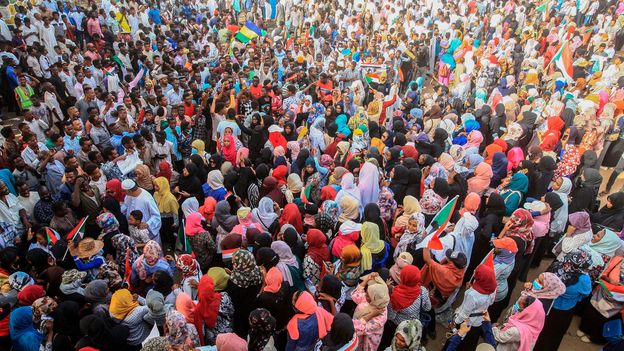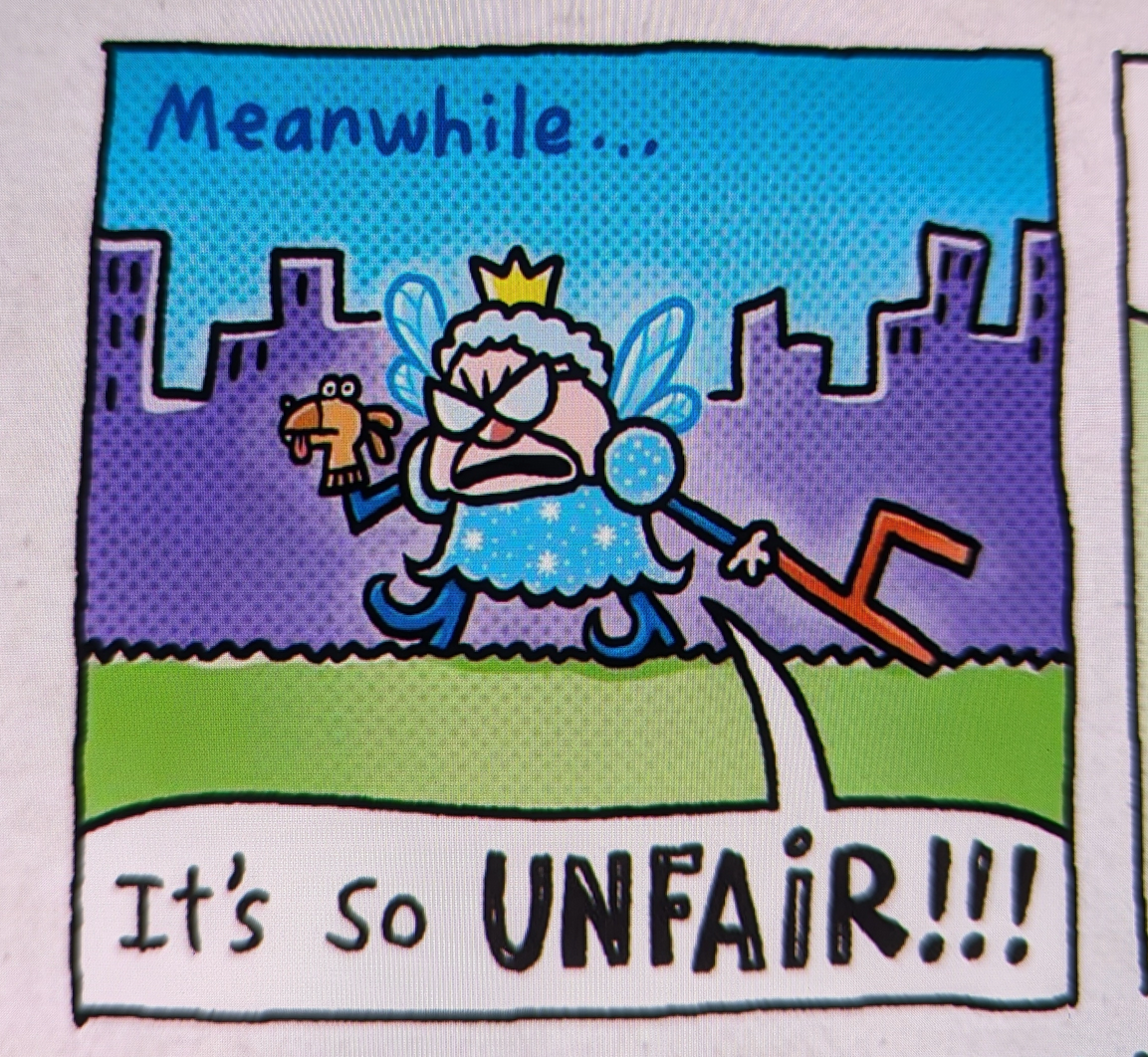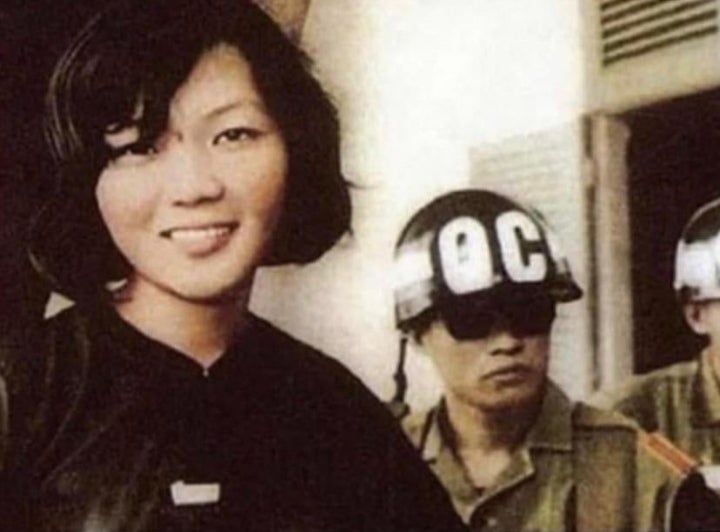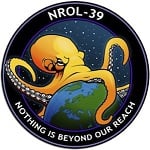- cross-posted to:
- bunkerdaesquerda@lemmy.eco.br
- politics@lemmy.world
- cross-posted to:
- bunkerdaesquerda@lemmy.eco.br
- politics@lemmy.world
Based on the article “no non-violent movement that has involved more than 3.5% of a population has ever failed” has the caveat of “we only look at 3 of them, and those 3 worked”.
So their overall sample size is small, and the 3.5% sample size is just 3. Further, those 3 had no idea someone in the vague future would retroactively measure their participation to declare it a rock solid threshold.
I think the broader takeaway is that number of people seems to matter more than degree of violence, and violence seems to alienate people that might have otherwise participated.
George Floyd protests had more than that (closer to 8%) and they didn’t really change anything.
This refers to Chenoweth’s research, and I’m somewhat familiar with their work. I think it’s good to clarify what non-violent means to them, as it’s non-obvious. For example, are economic boycotts violence? They harm businesses and keep food of the tables of workers. I don’t think that’s violence, but some people do, and what really matters here is what Chenoweth thinks violence is, and what they mean when they say “nonviolent tactics are more effective”.
At the end of “civil resistance: what everyone needs to know”, Chenoweth lists a number of campaigns which they’ve marked as violent/nonviolent and successful/unsuccessful. Let’s look at them and the tactics employed tonfigure out what exactly Chenoweth is advocating for. Please do not read this as a condemnation of their work, or of the protests that follow. This is just an investigation into what “nonviolence” means to Chenoweth.
Euromaidan: successful, nonviolent. In these protests, protestors threw molotov cocktails and bricks and at the police. I remember seeing a video of an apc getting absolutely melted by 10 or so molotovs cocktails.
The anti-Pinochet campaign: successful, nonviolent. This involved at least one attempt on Pinochet’s life.
Gwangju uprising in South Korea: unsuccessful, nonviolent. Car plowed into police officers, 4 dead.
Anti-Duvalier campaign in Haiti: successful, nonviolent. Destruction of government offices.
To summarize, here’s some means that are included in Chenoweth’s research:
- throwing bricks at the police
- throwing molotov cocktails at the police
- assassination attempts
- driving a car into police officers
- destroying government offices
The point here is not that these protests were wrong, they weren’t. The point is that they employed violent tactics in the face of state violence. Self-defense is not violence, and this article completely ignores this context, and heavily and knowingly implies that sitting in a circle and singing kumbaya is the way to beat oppression. It isn’t.
As a catalan actively involved in the 2012-2017 push for independence, I call bullshit.
That’s horseshit made up statistics.
Way more than 6% want single payer, but it’s not happening.A movement is a defined and coordinated event. It isn’t wanting something. The stats are not made up, but they have a lot of context that isn’t shared in the single sentence for sure.
I think it’s not “3.5% of people want an outcome” but “protests of significant magnitude to have 3.5% actively on the streets pushing” correlate with a very very large population that agrees, but not enough to be out on the streets.
So even if 40 million people want single payer, there are not 12 million in the streets.
But again, this is based on a scant handful of “movements”, so it’s pretty useless on specifics. Most I can see as a takeaway is perhaps that a violent movement may be too high stakes for people and a largely non-violent movement can attract more people and more people usually matter more than more violence.
And that pushing apparently includes activities the report defines as “nonviolent”
Well I meant the more rhetorical “pushing”, but yes, some of the activity of the claimed non-violence seems a bit violent.
I would say that I doubt you can have millions of people protest and manage to be completely non-violent. Some folks will take it to violence in the name of the cause, some will opportunisticly do it under the cover of the movement, and finally some might “false flag” to try to discredit the movement.
Why Civil Resistance Works the book that 2x figure comes from has some major controversy about cherry picking data as well as playing with the definition of peaceful protest.
If peaceful protests worked (as good as this article suggestions) the BBC wouldn’t be writing about them.
Yeah, look at the Iraq war protests, they didn’t amount to anything because they were peaceful and easily ignored by the media.
This was going to be my counterexample too. Millions protested in the US, UK, Australia, and elsewhere before any troops were committed and it still didn’t help. I dont have solid numbers but I’d be shocked if less than 3.5% of people were involved. They were the biggest protests ever at the time.
Claims without any supporting evidence aren’t that interesting.
Edit: OP changed his post after I called him out for not referencing any sources
How to blow up a pipeline has a chapter on the topic.
You can also read the original book and check the examples.
P.C. this is article about the fourth mentioned protest in the article, and literally the second paragraph is about clashes. There are 11 casualties during this series of protests.
But you knew that with your high standards of verifying information right?
I’m not the one making claims. If you want to make a claim cite a source.
The article also made claims. Did you check them?
Data presented to you by BBC the same network that lied to you about WMS in Iraq, genocide of the Palestinians people, and most likely more.
Yes, they leave out that the protests work because they are displays of very large amounts of people who, while peaceful now, they have reason to believe can become violent. Without being backed by the threat of violence, or seen as a diplomatic out to a movement that is, otherwise, violent, they don’t really work.
Also all their examples of non-violent successes had violent factions demonstrating the alternative.
correct, and in those cases they saw that there was an important group within the movement they could have a diplomatic out with, and they decided to take it before it was all violence
The radical flank effect:
https://academic.oup.com/pnasnexus/article/1/3/pgac110/6633666?login=false
I have read a number of things, over the years, discussing essentially this. They were always recalling historical movements to make their case, not so data driven. Thank you for the paper.
A lot of violent protests have succeeded too. Such as the suffragettes gaining the right to vote for women or unions gaining the right to exist, and the 8 hour work day.
American Revolution. French Revolution. Iranian Revolution.
Just a few very violent, and successful, revolutions.
I don’t really know if I’d consider the French revolution very succesful, considering the fact that the Bourbon dynasty was restored after only 16 years.
For how long? Irrelevant answer. The French Revolution was about shifting the ruling from nobility to bourgeoise and it’s exactly what happened. Valid to this very day.
I’d argue the French revolution is probably one of the most successful.
Who’s going to fight in your violent revolution? You? We couldn’t even get all the people who voted for Biden to Vote for Kamala. Right now a large portion of African Americans are refusing to join the protest movement against encroaching fascism because Trump is somehow a “white people problem.” How do you think a revolutionary army or even an insurrection of sufficient strength to challenge the United States Government would ever take hold when there is zero solidarity among the left? We can’t even get people to vote in their own interest, let alone support a violent revolution. This is pure fantasy.
Tell that to Hong Kong demonstrators on June 16, 2019, estimated by organizers at 2 million people marching. Hong Kong had a population of 7.5 million at the time.
Sure there was violence both before and after that protest, but mostly caused by violent crackdown by police.
But did it fail because there was violence or was violence a sign of stronger opposition? Causation vs correlation and all that.
Maybe they needed 3.5% of China? Since the repression was imposed from outside of the city its happening in a larger context than just the local demographics.
Yeah it seems to be the case as China didn’t respect the deal it made with UK to leave Hong Kong autonomous. If 3.5% of China did that it would most likely be a blood bath, be it a violent or non-violent protest.
Hong Kong wasn’t at or above 3.5% of Chinese population
I think we’re all aware. And Hong Kong isn’t (wasn’t) China in terms of governance(“one country, two systems”). China broke the deal it made with UK, which said Hong Kong would be autonomous until 2048, after which it would be incorporated into China.
But you’re right, not much to do when China claims authority and no one defends its right to free speech, democracy and autonomy.
Edit: added some need nuance on the “one country, two systems”.
China is as always a big Israel full of submissive but cunning cucks
Non-violent protests still need to come with a credible threat of becoming violent if the protesters’ safety is being attacked or if their human rights are compromised.
So how do you keep the police from making it violent?
Armed protestors
Numbers.
The simplest answer is usually not one that works, you can disperse crowds with water cannons alone and eliminate stragglers with arrests and rubber bullets
The real answer would probably end up being violence in the end, planned action to sabotage police movements, forming communes to act in unison and to act against the state and their tools
High participation raises the likelihood that the people in the police, military, national guard, have friends and family on the other side. This makes them less likely to use force and more likely to defect.
They are already outnumbered.
Police like to be more violent the more they’re outnumbered!
[CITATION NEEDED.]
Police, like all bullies, are ultimately cowards. They have no problem abusing people when they can do so with impunity. But if their own lives are on the line, suddenly they’re on their best behavior.
That’s why they get more violent. Less standing in lines, more gas. Less gas more flashbangs. Less flashbangs, more rubber coated bullets…
Bogus unsupported stats
This is actually rewriting history.
The Philippines had multiple militant movements but notably the Reform the Armed Forces which had orchestrated and abandoned a coup that had popular support kicking off the protest movement.
Sudan was a military coup that overthrew bashir and then massacred protestors and was actually backed by American OSI NGOs.
Algiers street protests were illegal and they combined general strikes with police clashes and riots even though they were subjected to mass arrests.
For Ghandi MLK jr and others mentioned there were armed militant groups adding pressure. My take away is you need both approaches.
Without demonstrating the ability to defend your nonviolent protest with devastating results it just gets crushed. If you are militant with no populist public movement backing your ideals you get labeled as terrorists and assinated by the feds.
are 2x more likely
Meaning, there can be instances where it’s true or not true.
66% of the time it works every time.
This is a really common misunderstanding of how nonviolent movements actually work, and frankly gets the causality backwards.
You’re right that successful movements often have both violent and nonviolent wings - but the nonviolent components don’t succeed because of the violent ones. They succeed despite them. The research is pretty clear on this: nonviolent campaigns are actually more likely to achieve their goals than violent ones, and they’re more likely to lead to stable democratic outcomes.
Nonviolent movements get labeled as extremist precisely when they’re associated with violence, not when they’re separate from it. The Civil Rights Movement’s greatest victories came when they maintained strict nonviolent discipline - Birmingham, Selma, the March on Washington. Every time violence entered the picture, it gave opponents ammunition to dismiss the entire movement.
The “good cop/bad cop” theory sounds intuitive but doesn’t hold up to scrutiny. What actually makes nonviolent resistance effective is mass participation, strategic planning, and moral leverage - not the threat of violence lurking in the background.
You talk about research, so I’m curious: has any nonviolent campaign succeeded without an accompanying violent campaign?
Yes, but it’s complicated. I’ll use Iran’s long tradition of nonviolence as a case study.
In the late 1800’s when the shah tried to sell out tobacco farmers to foreign exploitation, and virtually everyone in the country opposed it, resulting in a tobacco boycott. Virtually everyone in the country participated it, including members of the shah’s own harem, and religious leaders issued a fatwa condemning anyone who violated it. The shah was forced to cave to pressure and reversed the decision.
This boycott movement helped for organization that would set the stage for later (largely peaceful) protests that led to the shah signing a constitution and establishing a democratic parliament. Unfortunately, he died shortly afterwards, and his son was much less cooperative, and called on foreign assistance to shell parliament, and successfully restored himself to power.
During WWI, Iran was invaded by the Ottoman, British, and Russian Empires, and the country suffered greatly from disease, famine, and the Armenian genocide, leading to over 2 million civilian deaths during the period. The Qajar dynasty collapsed, as did the Ottoman and Russian Empires, allowing Britain to dominate the power vacuum. They supported the new Pahlavi dynasty into power, there was a parliament, but the shah generally appointed whoever the British told him to as prime minister.
At this point, oil had been discovered in Iran, and the Iranians were stuck with an awful, exploitative deal that the previous dynasty had signed, as part of their general policy of selling out every part of the country to foreign colonizers so the shah could have a bigger harem. This deal was substantially worse than the general deal the US offered (which was generally 50/50 between the country that owned the oil and the country that built the infrastructure to extract it). But the terms didn’t actually matter because the British violated them all the time, vastly underreporting how much oil they were extracting so that they paid virtually nothing, and the Iranians had zero oversight of their records. Britain relied on this oil to be one of the richest and most powerful nations on the planet, while the Iranians remained some of the poorest people in the world.
For the next several decades, the Iranian people repeatedly asked Britain very nicely if they would possibly consider not stealing all their oil. And for those decades, the British completely stonewalled them, refused to consider any sorts of concessions whatsoever. Even with their own, hand-picked prime ministers, they still stonewalled them.
Finally, in the 1950’s, and a peaceful democratic movement successfully pressured the shah to appoint a popular leader, Mohammad Mosaddegh, as prime minister - the shah finally became more afraid of popular discontent than he was of the British. Mosaddegh, after making attempts to negotiate, made a decision with overwhelming popular support, to nationalize the oil industry. This, however, led the British to impose a blockade, crippling the country’s economy.
Mosaddegh was an idealist, and he believed the Americans would see his cause as just, connect it to their own revolution, and back him up against the British. At this point, most Iranians had neutral or positive views of the US, seeing them as well intentioned, if naive, not understanding how long the Iranians had been struggling against British colonialism. All of these perceptions were proven completely wrong, because, rather than backing them up, Eisenhower agreed to use the CIA to overthrow Mossadegh to protect BP’s profits and to ensure British cooperation with NATO and the Korean War. This was the first of the CIA’s coups of democratic governments.
A stark example of this betrayal is that, the day before the coup, a US ambassador called Mossadegh and fed him a false story about how his supporters had been calling the embassy with death threats, and he was afraid he’d have to shut it down. Mossadegh - who had refused to crack down on (CIA funded) protests, or censor the (CIA controlled) press, or seek aid from the Soviets, or otherwise do anything to disrupt the infiltration out of concern for principles and respecting dissent -then issued as public statement calling for his supporters to cool it and stay off the streets. When his residence was attacked, no one was on the streets to come to his aid. He lived out the rest of his life under house arrest, while the shah used his absolute power to hunt down and exterminated the Iranian left - until he finally crossed the US and was himself overthrown by the current government.
When the stakes were low (from a geopolitical perspective), like, some poor tobacco farmers trying to maintain their (still quite poor) lifestyle, nonviolence worked. When the stakes were higher, like, changing the whole structure of the government, nonviolence worked better than one might expect, but generally encountered violent resistance and counter-revolution and fell apart. When the stakes were very high, like, trying to get a world-spanning empire to stop stealing the resource it needed to dominate the world, nonviolence was not very effective at all.
Being in Iran’s position, it really wouldn’t matter what they did to try to appease Westerners, so long as they assert control over their natural resources - so they don’t really bother. The goal of nonviolence is to be “in the right” but Iran’s history proves that you can be 100% “in the right” and still lose because foreigners don’t know/care about what’s being done to you, or are propagandized to side with the oppressor.
This doesn’t necessarily apply to protests in the US, but it can. If you’re a nonthreatening old white lady and your goals are not too disruptive to the empire, then sure, do nonviolence. But if you’re someone who the news could villainize, who people will assume the worst of just because of your race or religion, then they’re probably going to characterize you as violent whether you are or not. And if your goals are something that would disrupt the ruling class’s hold on power, then understand that the only reason they aren’t gunning you down is that they aren’t afraid of you - the real dangerous part about nonviolence is that it can be effective, and if power is threatened it will respond with force.
The research is pretty clear on this:
Lol. What was the methodology on this “research”?
The Nonviolent and Violent Campaigns and Outcomes (NAVCO) Data Project is the world’s leading dataset on the characteristics and outcomes of nonviolent and violent resistance campaigns. The latest version covers 627 mass mobilizations in every country in the world from 1900-2021. The coverage is global but excludes maximalist campaigns (i.e. those seeking to overthrow an incumbent government, expel foreign military occupation, or secede).
Chenoweth and co-author Maria J. Stephan published their first analysis of the comparative outcomes of nonviolent and violent resistance campaigns in the 2011 book Why Civil Resistance Works: The Strategic Logic of Nonviolent Conflict. In this book, the authors aggregated data from 1900–2006 and concluded that, overall, nonviolent civil resistance was more successful in achieving target outcomes than campaigns that use violence. The more recent dataset featured in the interactive tool confirms this trend and extends it into the past decade.
That didn’t remotely answer my question.
I directly answered you and provided sources and background.
Maybe try reading on your own without a mentor for granting you reading comprehension
No you didn’t. I asked for the methodology, you didn’t even remotely answer that.
Maybe try not lying about things that are easy to check.
What was the lie? You sound like a sealion, the reference provided was a solid one.
If you want to question the Harvard Kennedy schools methodology then you can provide the evidence.
I think what they’re looking for in terms of methodology is what objective criteria they use to determine if a protest is violent or nonviolent, as well as what constitutes success or failure. These are not trivial questions, and there’s lots of debate surrounding virtually any given movement, so to make objective determinations about a large number of such movements raises the question of how they’re resolving all these questions and debates. Some might argue that such questions are inherently political and up to interpretation.
As another user in this thread pointed out, it may be a case of confusing correlation with causation: if a movement is popular, it may be more likely to succeed and more likely to be considered nonviolent, as compared to a less popular movement employing the exact same tactics.
It did give the info needed to find this.
Violent campaigns on the other hand were defined as follows: “Violent resistance […] involves the use of force to physically harm or threaten to harm the opponent.” (Chenoweth/Shay 2020: 5). Violent campaign data was primarily collected from different databases including: The UCDP Armed Conflict Database, the Correlates of War database on intra-state wars (COW), Clodfelter’s encyclopedia of armed conflict (2002), and Kalev Sepp’s list of major counterinsurgency operations (2005) (Chenoweth/Shay 2020: 5). To note is that should a campaign at some point during its lifespan shift from a non-violent campaign to a violent one or vice versa, that this campaign is then coded as two separate campaigns (Chenoweth/Shay 2020: 7).
This led me to believe they are analysing in a vacuum but that would only really be true for the Philippines example.
This review is a fantastic in depth analysis of the data and outcomes when violent flanks (apparently the research term describing the parallel movements that are not nonviolent) are included.
https://www.annualreviews.org/content/journals/10.1146/annurev-polisci-051421-124128#f1
Two tables analyse the purported and contradictory outcomes of the flanks in different research projects and papers. The authors conclusions are interesting to me in that he or she believes them to reduce long term success and increase short and mid terms, and also poiints out other factors in table 3 that affect the outcomes. One thing eluded to is that the societies perception of the movements being majority violent or non violent is actually the determining factor in the outcome and that I agree with in societies that presuppose nonviolence as a determining factor for success. I imagine nonviolence is a lit less important when you see yourself as occupied by an external force.
Thanks! That’s very comprehensive.
deleted by creator
Let me know what all the peaceful protests on climate change did leading up to and since the Paris Agreement.
Civil disobedience, including violent action, absolutely has a place in changing the policy of the state.
Sure, a poor uneducated place.
Anyone who makes peaceful revolution impossible makes violent revolution inevitable.
Lmao I love that people still reply to you when your name is trollception.
Well done.
List all the regimes that weren’t brought down by peaceful protests and singing kumbaya. No worries we will wait.
Czechoslovakia’s Velvet Revolution was one instance, assuming you squint and ignore all the NATO soft power involved.
The 2018 and 2024 Armenian Revolutions also technically qualify. Although, the fact that they had two in six years raises questions of their effectiveness.
2024 Armenian Revolutions
A “Revolution” lol that didn’t do anything and was hardly even noticed by the locals in Yerevan.
Um, you sure you don’t mean all the regimes that “were” brought down by peaceful protests and singing kumbaya? Either way I really don’t have the desire or time to look any of that up for you.
Ah, so you agree there IS a place though.

















